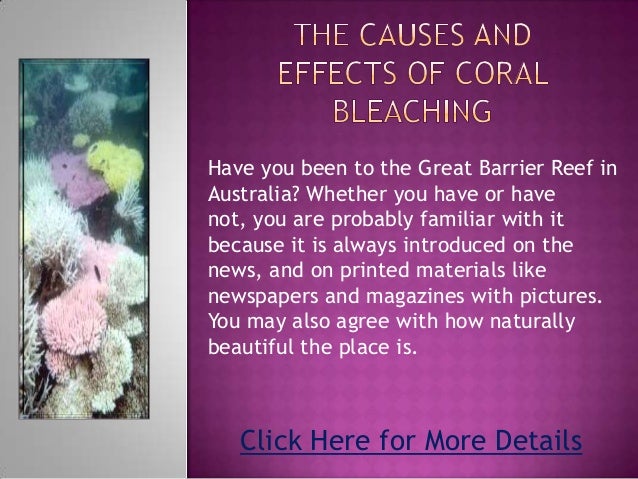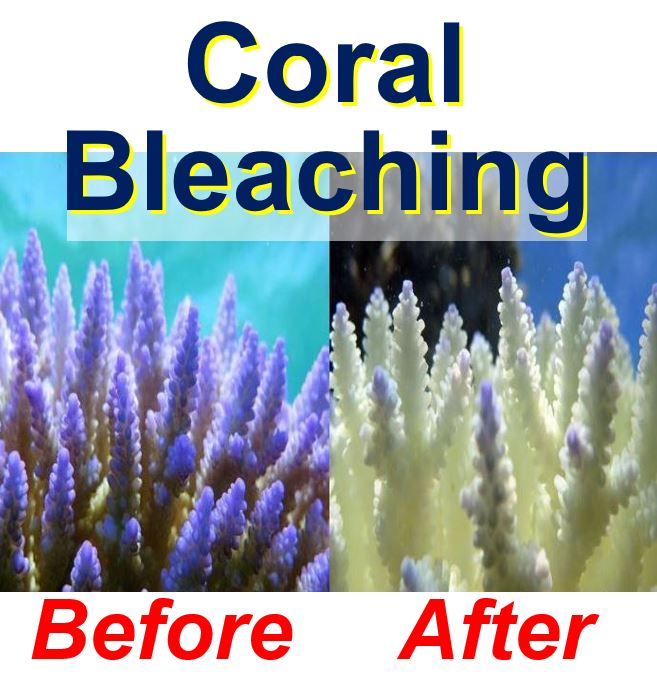The causes and effects of coral bleaching Biology Diagrams Consequences of coral bleaching How coral bleaching affects marine life. Coral reefs are biodiversity hotspots due to their complex structure, abundant food sources, and diverse habitats supporting thousands of marine species including fish, invertebrates, and other sea organisms. While some bleached corals can recover, they are still left more prone to secondary impacts that can cause death Coral Bleaching Effects on Marine Life. Coral bleaching has profound effects on marine ecosystems. These vibrant ecosystems support a wide array of marine life, and when they bleach, the impacts ripple throughout the food chain.Coral reefs are often referred to as the rainforests of the sea due to their rich biodiversity. They provide habitats

Coral reefs provide shelter, spawning grounds, and protection from predators. They also support organisms at the base of ocean food chains. As reef ecosystems collapse, already at-risk species may face extinction. How does coral bleaching impact humans? Coral bleaching impacts peoples' livelihoods, food security, and safety. The effects of this changing prey community on reef-associated mesopredators remains poorly understood. This study found that the total diversity, abundance and biomass of piscivorous mesopredators was lower on regime-shifted reefs than recovering reefs, 16 years after the 1998 mass coral bleaching event. Coral bleaching has a variety of causes. It may result from increases in seawater temperature, particularly when associated with elevated levels of solar irradiance (e.g., ultraviolet radiation), or it may be caused by changes in seawater chemistry (e.g., due to ocean acidification or pollution), increased levels of sediment in seawater, or a coral's exposure to sodium cyanide (a chemical

Regime shifts shorten food chains for mesopredators with potential ... Biology Diagrams
Food chain length (FCL) Sublethal effects of coral bleaching on an obligate coral feeding butterflyfish. Coral Reefs, 23, 352-356. [Google Scholar] Ruiz‐Cooley, R. I. , Garcia, K. Y. , & Hetherington, E. D. (2011). Effects of lipid removal and preservatives on carbon and nitrogen stable isotope ratios of squid tissues: Implications for

Introduction. Coral bleaching is a global issue that threatens the persistence of coral reefs, the world's most diverse marine ecosystems , , .Over the past 15 years, several major bleaching events have occurred around the globe and caused widespread mortality of corals .Consequently, coral cover on reefs throughout the Indo-Pacific region is declining at a rate of approximately 3,100 km 2 per It could also have knock-on effects between species and up the food chain, she added. Human-driven climate change has spurred mass coral bleaching as the world's oceans get warmer.
![[PDF] Coral Bleaching Induced Mortality Transforms Local and Global ... Biology Diagrams](https://d3i71xaburhd42.cloudfront.net/359acc81a2bb19e9cff8c7c72194ee12bc30de3a/23-Figure3-1.png)
What is Coral Bleaching and What Causes It Biology Diagrams
The Importance of Coral Reefs (image credits: pixabay) Coral reefs are vital to marine ecosystems, offering a habitat for a vast array of marine species. They serve as nurseries for fish, providing shelter and food. Coral reefs support over 25% of all marine life, despite covering less than 1% of the ocean floor. Coral bleaching is a global crisis, caused by increased ocean temperatures caused by carbon pollution and climate change. Zooxanthellae provide the coral with food and energy from the sun (due to a process called photosynthesis), allowing them to grow and reproduce. This will have terrible consequences right up the food chain impacting